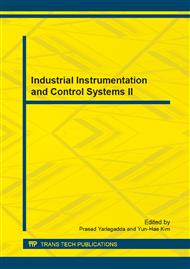p.458
p.463
p.467
p.471
p.475
p.480
p.484
p.489
p.493
The Calculation of the Equivalent Linear Damping Coefficient of the Magnetorheological Damper
Abstract:
MR damper (magnetorheological damper) has broad application prospects, and equivalent damping coefficient is very important of its dynamic characteristic analysis. Based on the modified Bouc_Wen model, the performance of MR damper was analyzed and the equivalent linear damping coefficient of MR damper was calculated. Based on simulation date of the modified Bouc_Wen model, the relationships between the equivalent linear damping coefficient of MR damper and the parameters of control voltage and MR dampers movement amplitude were established by the curve fitting regression analysis method. Verification results prove that the equivalent linear damping coefficient model has higher accuracy. For the vibration systems using strongly nonlinear MR damper, new model can effectively improve the efficiency of calculating the vibration analysis and the stability of the system in a certain frequency. At the same time, the model provides a theoretical basis for the application of MR damper control.
Info:
Periodical:
Pages:
475-479
Citation:
Online since:
July 2013
Authors:
Price:
Сopyright:
© 2013 Trans Tech Publications Ltd. All Rights Reserved
Share:
Citation:


